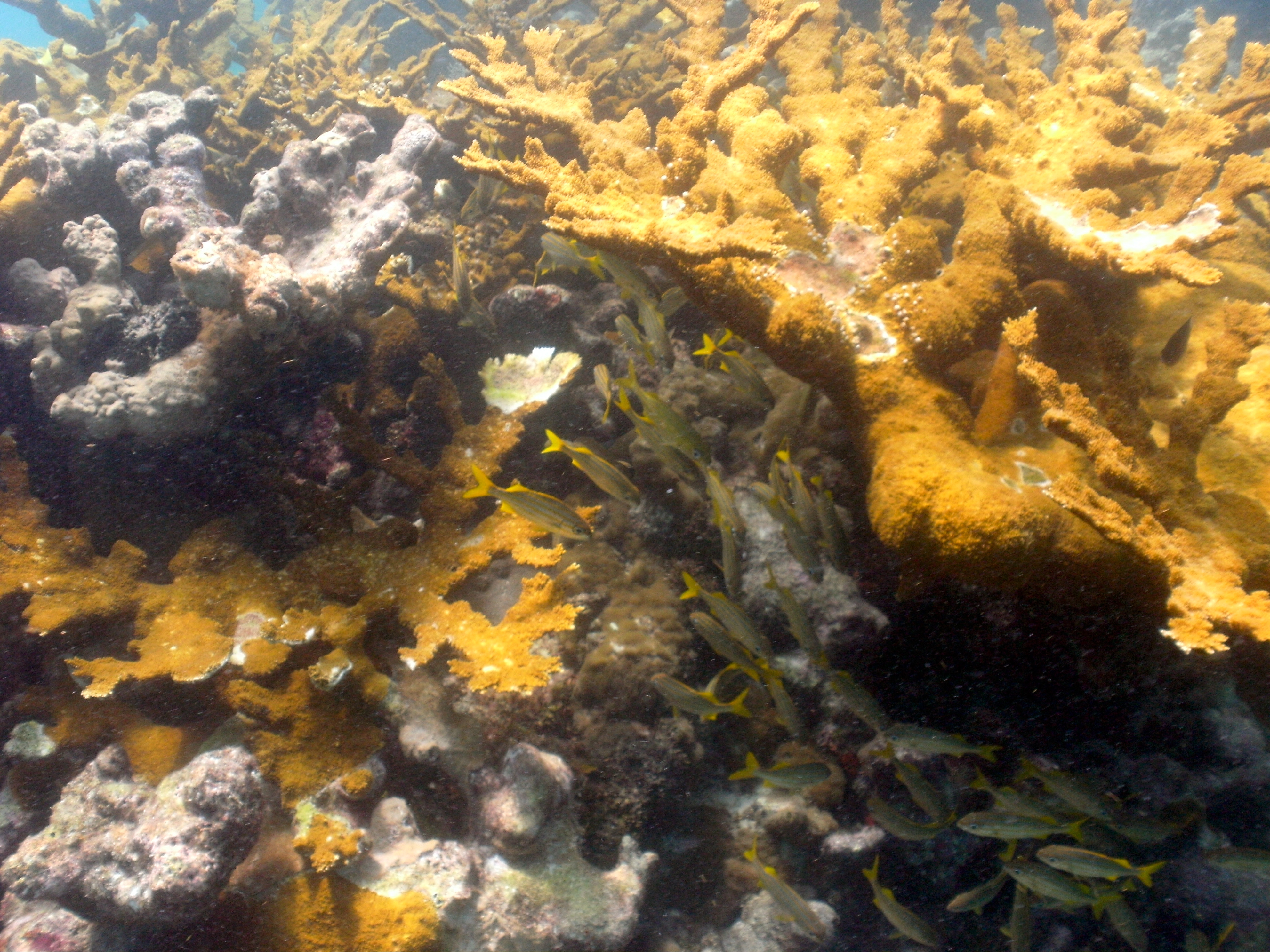MECHANICSVILLE, Va.—Last Wednesday the National Oceanic and Atmospheric Administration announced that 20 species of corals will protection under the Endangered Species Act. Five of the species occur in Caribbean waters, the other 15 occur in the Pacific and Indian oceans.

LOOE KEY REEF, Fla. — A school of Yellowtail snapper (Ocyurus chrysurus) hides among the arms of elkhorn corals (Acropora palmata) near Mooring 18 at Looe Key Reef on Aug. 16, 2014. Note the dead skeletons of elkhorn coral on the left side of the image. (David M. Lawrence)
In addition, the agency found that two Caribbean species previously listed as threatened, elkhorn and staghorn corals (Acropora palmata and A. cervicornis, respectively), still warrant threatened status.
The 15 Indo-Pacific species listed include 11 additional Acroporid species—Acropora globiceps, A. jacquelineae, A. lokani, A. pharaonis, A. retusa, A. rudis, A. speciosa, A. tenella, Anacropora spinosa, Isopora crateriformis, and Montipora australiensis—as well as Euphyllia paradivisa, Pavona diffluens, Porites napopora, and Seriatopora aculeata.
The five new Caribbean species listed are pillar coral (Dendrogyra cylindrus), boulder star coral (Orbicella annularis, formerly classified as Montastraea annularis), O. faveolata (formerly M. faveolata), O. franksi (formerly M. franksi), and rough cactus coral (Mycetophyllia ferox).
The list of 22 species is significantly reduced from the original petition—filed by the Center for Biological Diversity on Oct. 20, 2009—to list 83 species as threatened or endangered under the Endangered Species Act. The list was whittled down to 66 when the National Oceanic and Atmospheric Administration published its proposed final rule on Dec. 7, 2012.
NOAA said it reduced the number of protected species further because:
- We received and gathered new general and species specific information.
- Public comments helped us refine the way we apply all the available information to determine vulnerability to extinction of each species considered.
In a story on the NOAA Fisheries website, the agency summarized the status and significance of and threats facing coral reefs today:
Coral reefs are critical to the health of marine ecosystems and they face severe threats. Coral reefs world-wide have declined significantly—some individual species have declined by at least 90 percent. Healthy coral reefs provide shoreline protection for coastal communities and habitat for a variety of species, including commercially important fish. These benefits are lost when corals are degraded. As part of this rule-making process, NOAA identified a number of threats to coral ecosystems, some of the most serious of which are: impacts related to climate change (rising ocean temperatures, ocean acidification, and disease), ecological effects of fishing, and poor land-use practices.
The agency said it will work with regional and local partners to find ways to mitigate the damage done to coral reefs today and to reverse the declines in the listed species. The recovery measures under consideration include watershed management, reduction of land-based pollution, and coral restoration.
The final rule, published in the Federal Register on September 10, took effect on October 10. The ext of the final rule can be downloaded from either here or here.

No Comments Yet